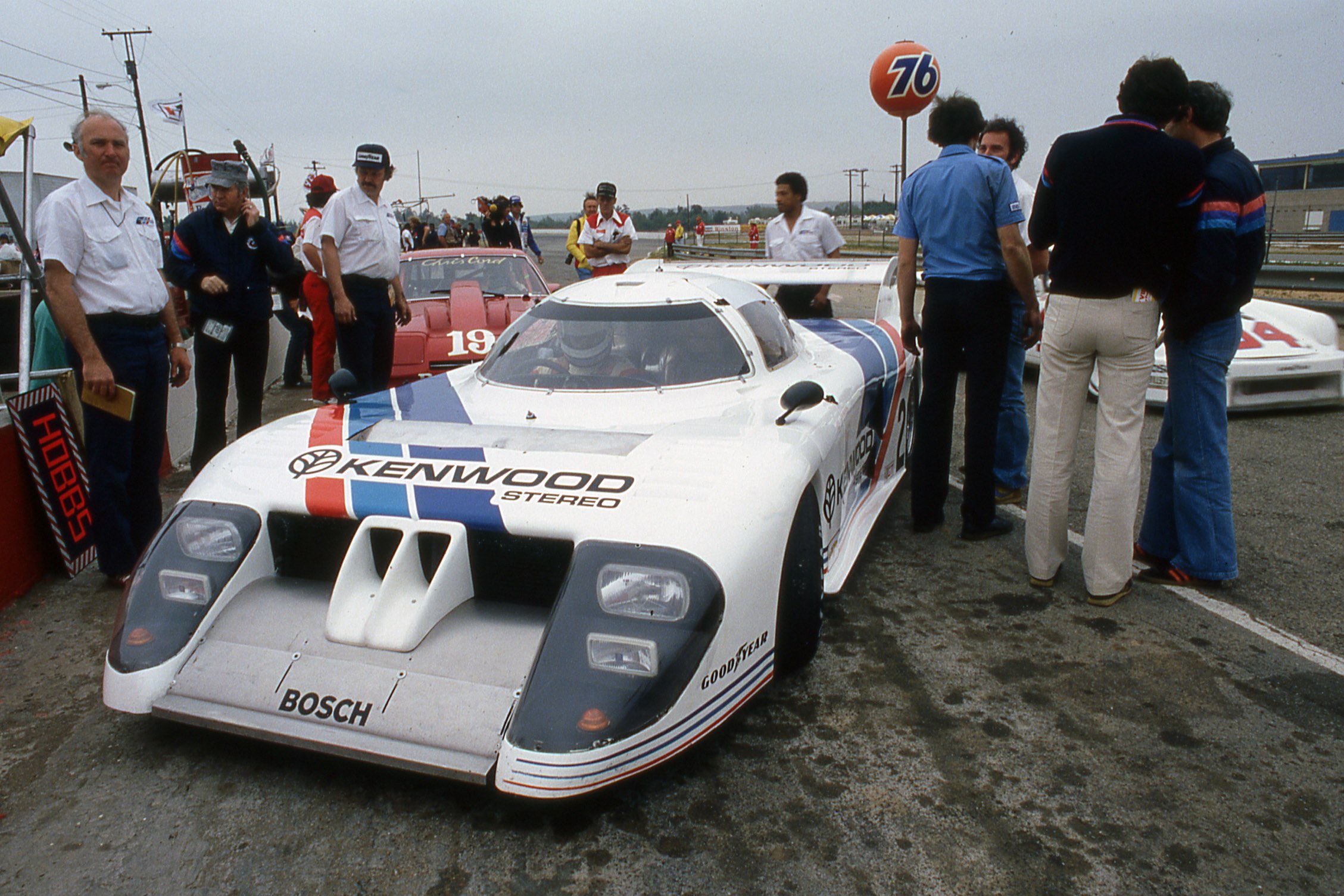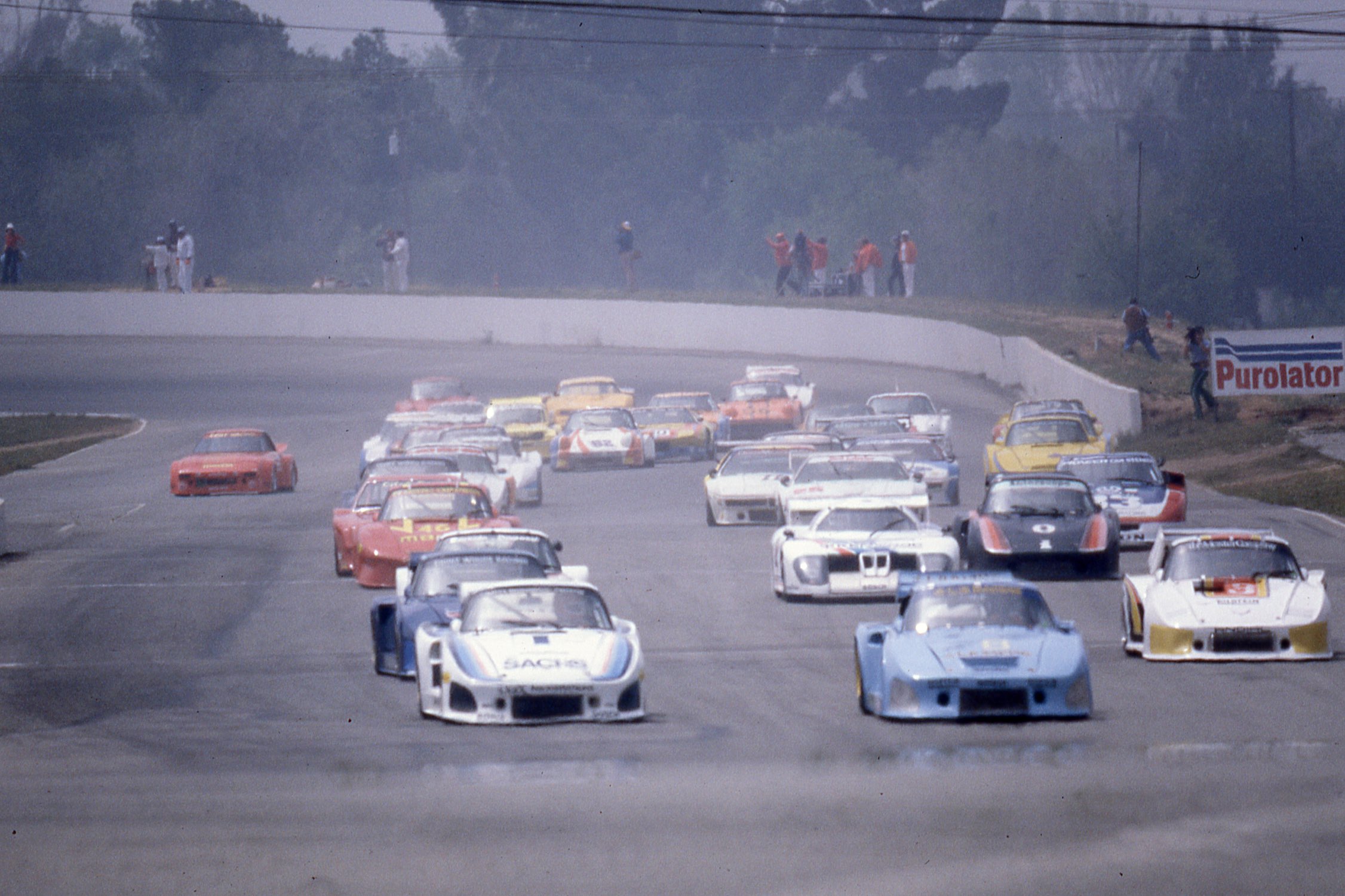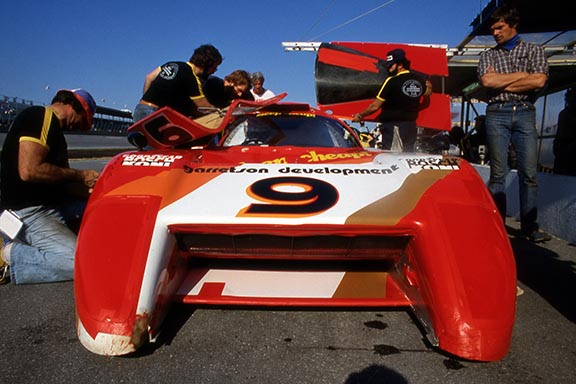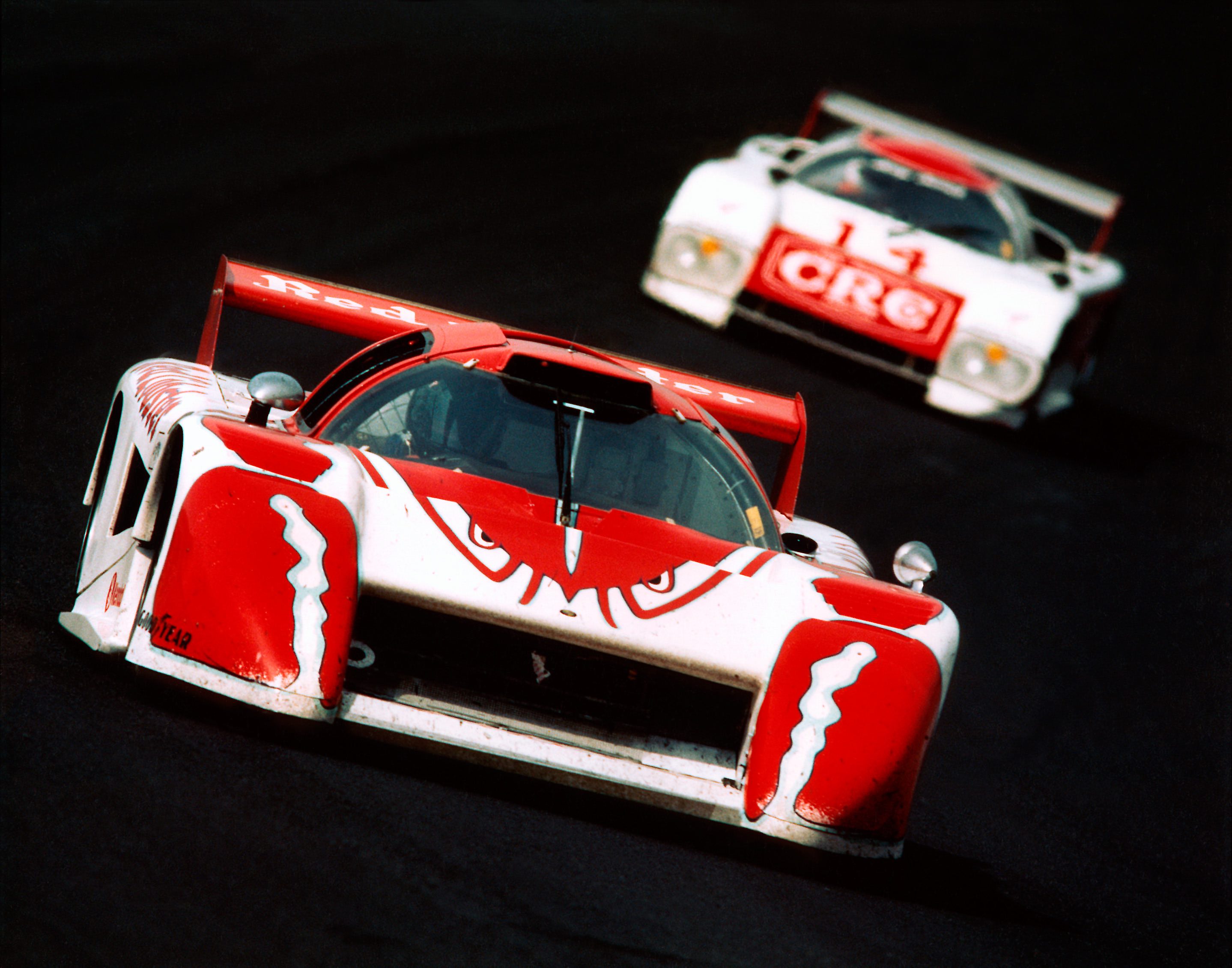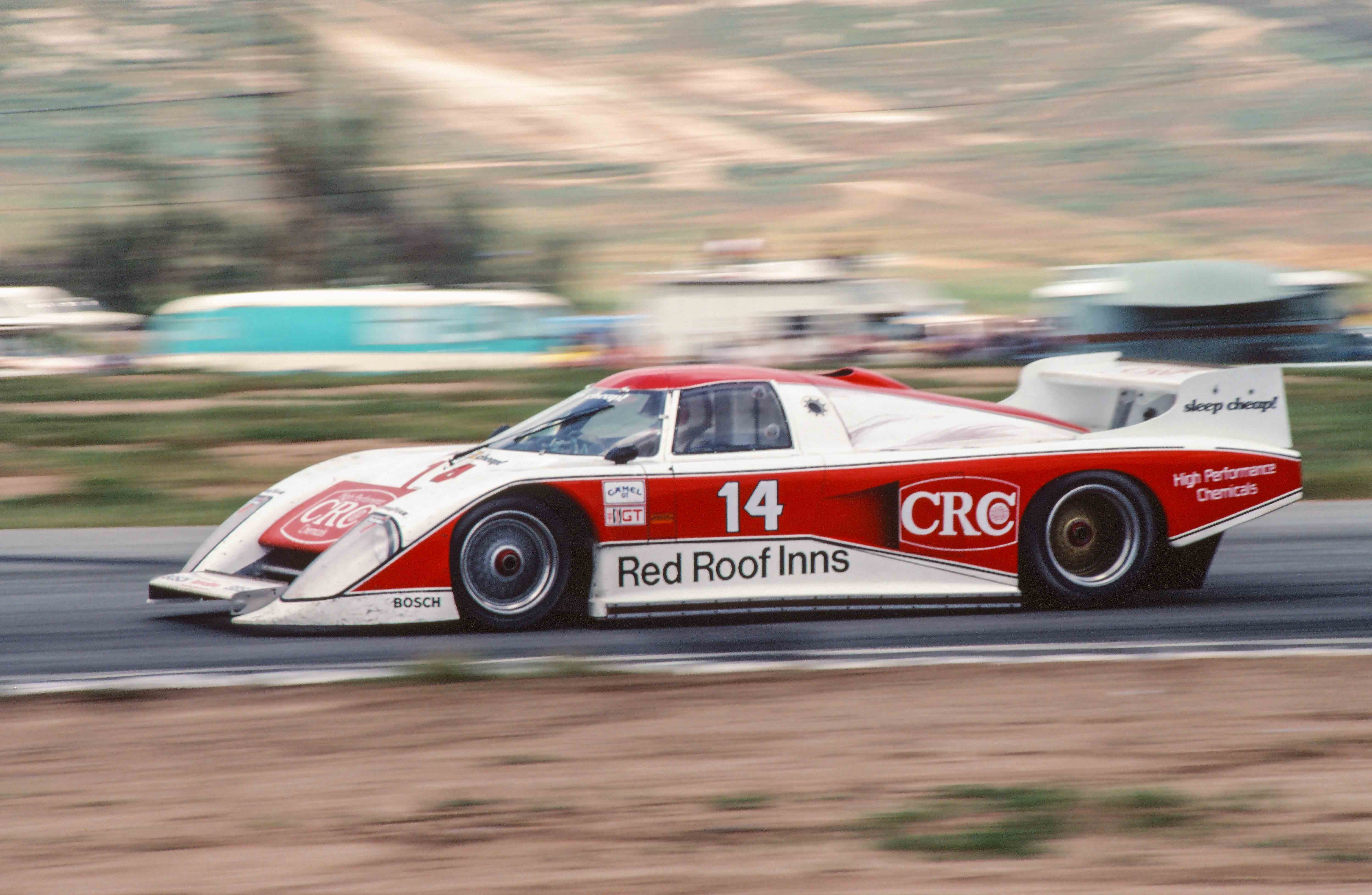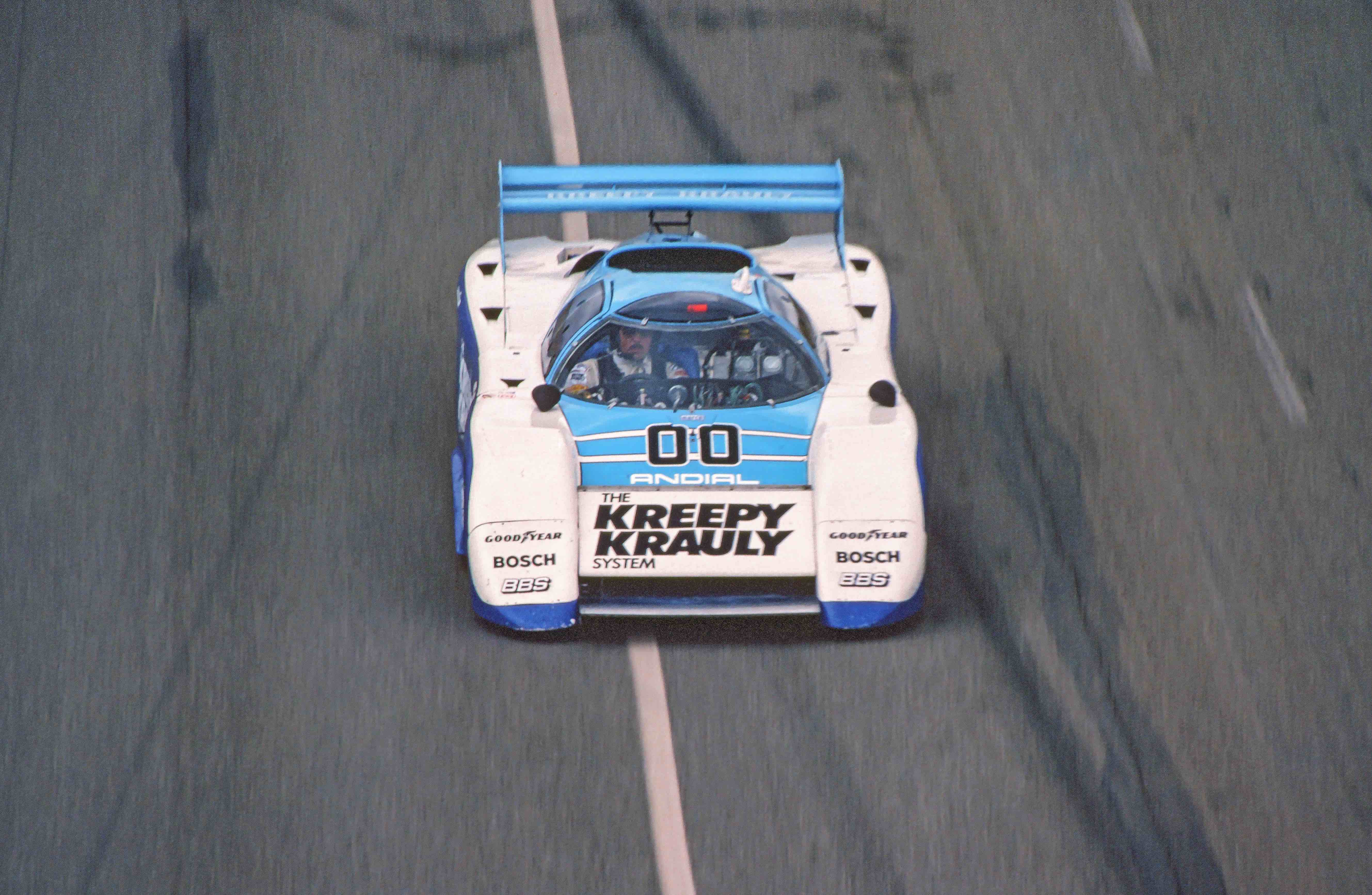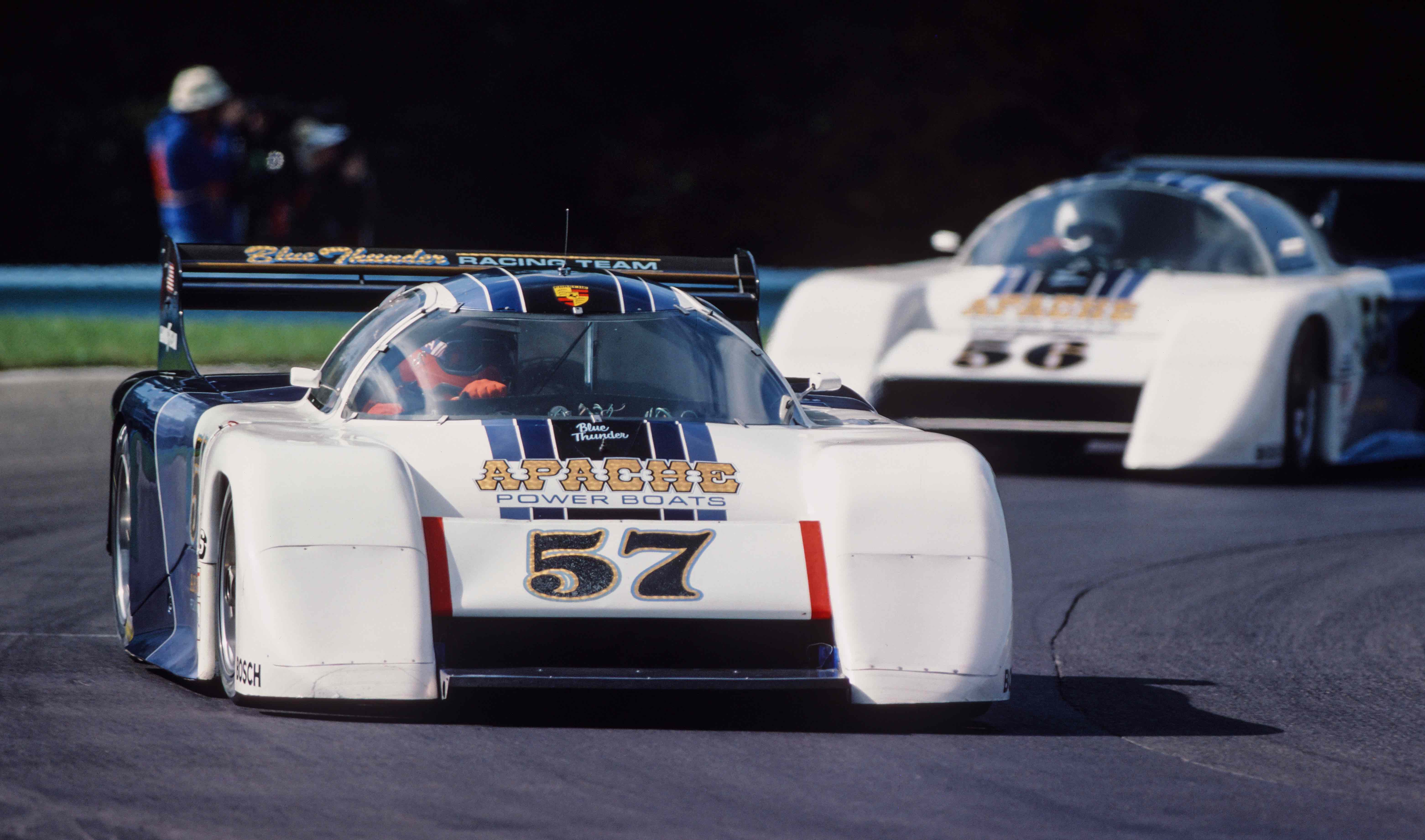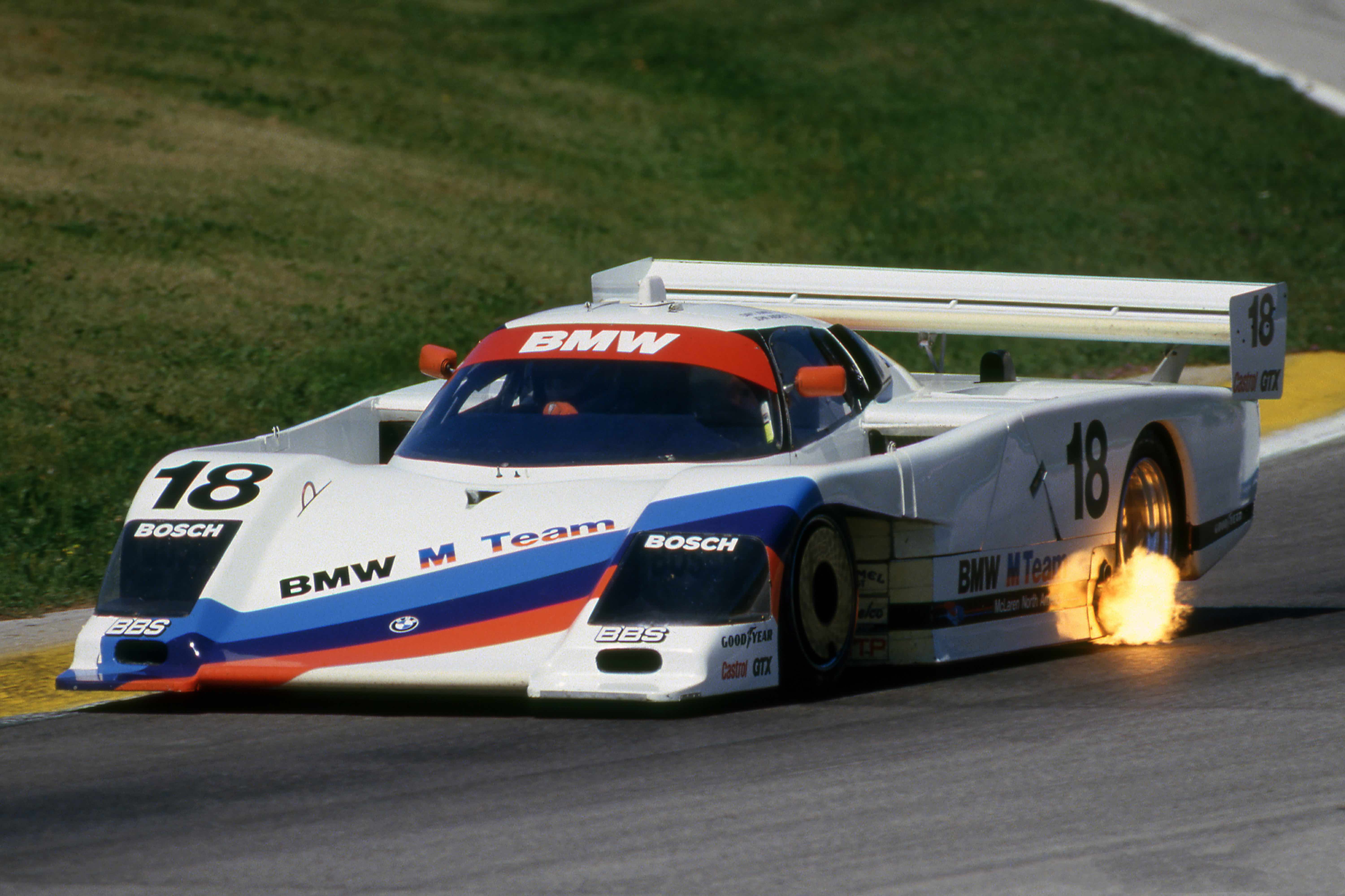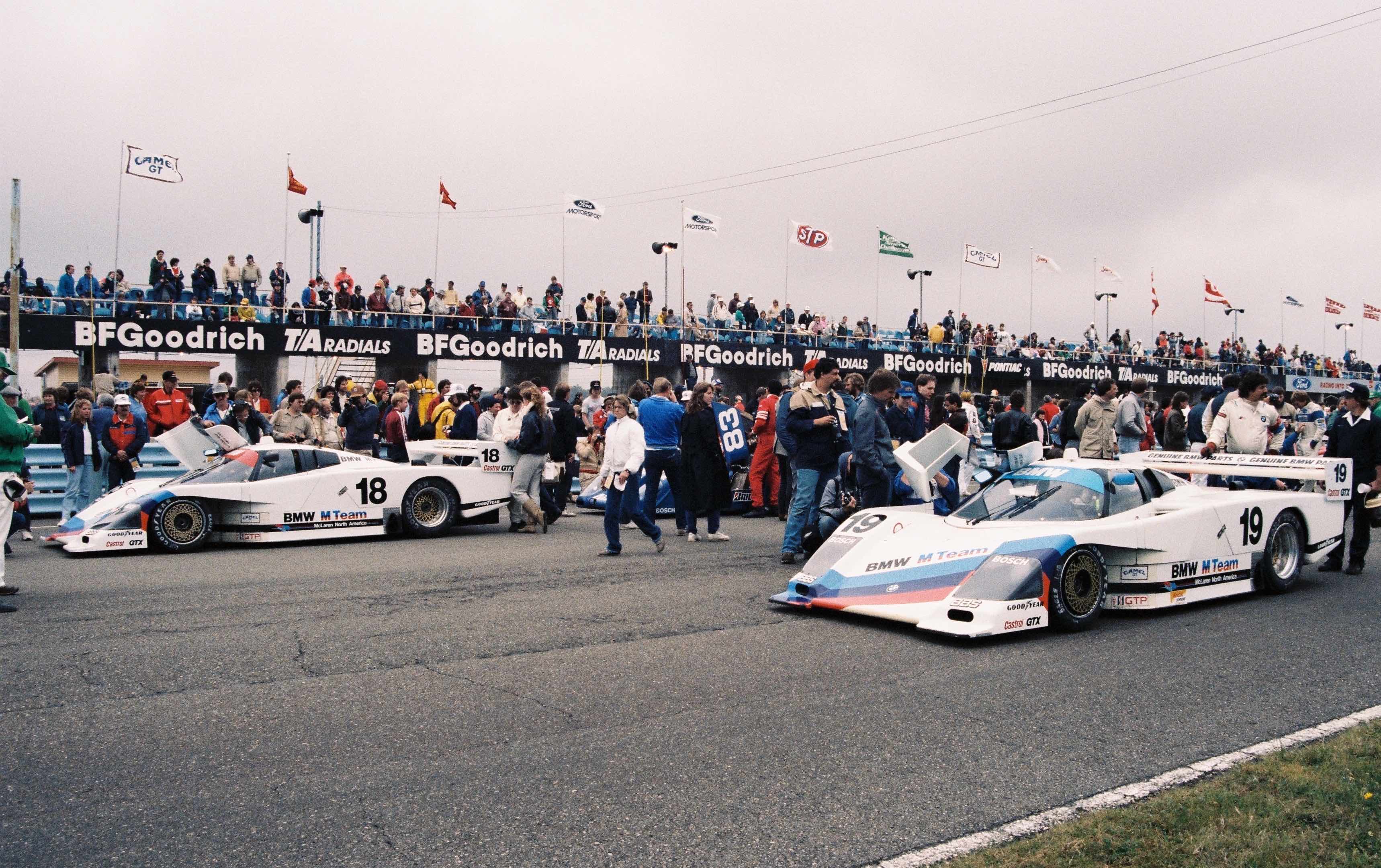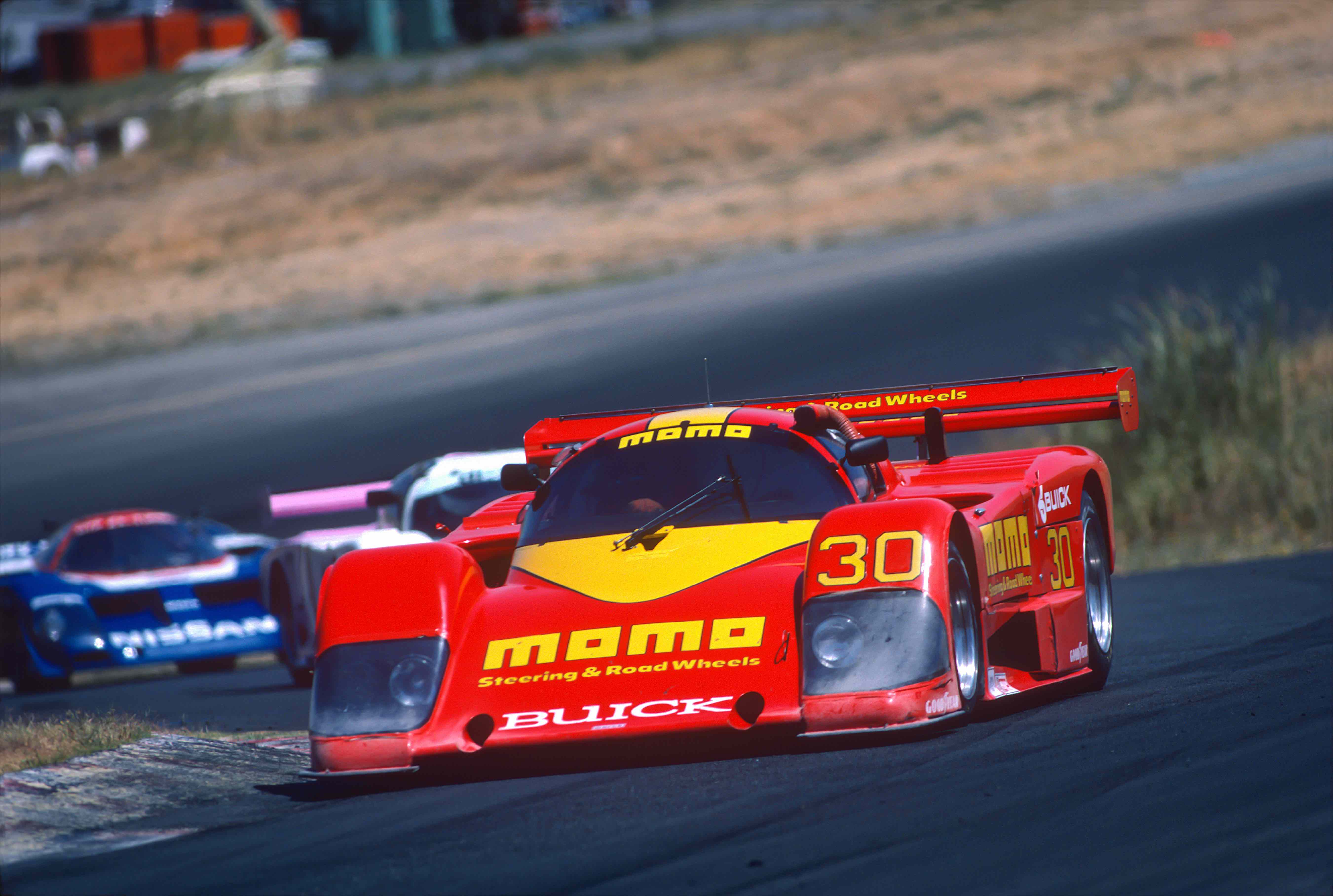The following is an excerpt from “IMSA 1969-1989” that tells the inside story of how IMSA got started and its first 20 glorious years. Available from Octane Press or wherever books are sold.
_____________________________________________________________________________________________
BMW of North America’s racing group was established in 1975 in an effort to support the company’s growth in the lucrative US performance car market. Unfortunately, the company did not have an IMSA championship to show for the investments in the BMW 3.0 CSL and the turbocharged BMW 320i. With just one or two cars pitted against a host of Porsches, the odds were not in their favor. The tube frame M-1 Procar did crush the GTO competition in 1981 but was underpowered in IMSA’s top GT Prototype (GTP) class.
Something had to be done to narrow the gap. Former SCCA executive Jim Patterson, who took over the BMW North America racing program in 1978, saw the newly minted IMSA GTP rules in 1980 as a way to get back in the game. Working with partner March Engineering, a unique new prototype was unveiled in early 1981 that would become the basis for a long, successful supply of GTP cars to the IMSA field from the British company.
The BMW M1/C debuted at Riverside in April 1981. The March chassis featured a modern aluminum monocoque that was mated to a normally aspirated 3.5-liter BMW engine. The team would upgrade to a 2.0-liter turbocharged motor later in the year. Photo: Don Hodgdon
Designed by French aerodynamics expert Max Sardou and BMW engineer Raine Bratenstein, the car was dubbed the BMW M-1/C. It was built around a March Engineering aluminum monocoque and featured two distinctive pontoons at the front that were designed to channel airflow to both the radiators and twin ground-effects tunnels for maximum downforce. The car was initially fitted with a 3.5-liter, six-cylinder, normally aspirated BMW engine, and entered for the first time at the Riverside 6 Hours in April 1981 with David Hobbs and European endurance veteran Marc Surer at the wheel. Featuring sponsorship livery from Kenwood audio, the pair finished a credible sixth place, albeit eleven laps down to the winning 935 piloted by Fitzpatrick and Busby.
The lone BMW M1/C is swamped by a host of Porsche 935s at the start of the 1981 Riverside Camel GT race. The M1/C would go on to finish sixth, eleven laps down from the winning Porsche 935 of John Fitzpatrick/Jim Busby (#1). Photo: Don Hodgdon
A week later at Laguna Seca, Hobbs placed sixth again, this time one lap down to the new Lola T-600 with Brian Redman at the wheel. Although down on power, Hobbs managed to put the car on the front row at both Lime Rock and Mid-Ohio. The first few races proved the M-1/C had real potential and the decision was made to further develop the chassis and engine. The long-term plan was to install the 1.5-liter turbocharged BMW motor being developed for Formula One, but that engine wasn’t ready and would never be used in the March. Instead, the team force-fit the same turbocharged 2.0-liter, four-cylinder engine that had been used successfully in the McLaren-engineered BMW 320i program. Since the M-1/C had not been designed for that power plant, it required a cooling workaround for a motor that produced 600 to 675bhp with the boost turned up.
Results were mixed after the change. The new engine debuted at Sears Point in August. The car was fast and competitive, but ultimately unreliable. A fourth place at Portland would turn out to be the team’s best finish. Despite stating long-term commitments early on, BMW again left IMSA racing at the end of the year, this time to focus on its Formula One program.
Even with this setback, March Engineering took what it had learned from the M-1/C experience and produced a viable, stable GTP customer car for 1982, dubbed the 82G, that was designed by Gordon Coppuck. The first two customer March 82Gs appeared in January for the 24 Hours of Daytona. One of them was a Chevrolet V8-powered version driven by Bobby Rahal and Jim Trueman and fielded by Garretson Enterprises. Rahal would campaign the car in later rounds with Michelob backing.
The first March 82G customer car was fielded by the Garretson team at Daytona in January 1982. Photo: Bob Harmeyer
The other March was campaigned by Dave Cowart and Kenper Miller’s Red Lobster team. After winning the 1981 GTO championship in the dominant BMW M-1, the team commissioned an 82G from the March factory with the now well-tested 3.5-liter BMW M-1 engine. The distinctive twin pontoons of the March turned out to be a perfect canvas for two Red Lobster claws, a design that became iconic almost instantly. Unfortunately, the normally aspirated BMW engine was no match for the Chevy V8 or Porsche 935s, and for 1983 the team campaigned with Porsche 935 turbo power, only to suffer from overheating issues. The team took the midsummer Daytona race off in 1983 and came back later in the year with Holbert’s second March 83G powered by a Chevy V8.
The twin pontoons of the March 82/3G were ideally suited for the paint scheme of the Red Lobster team, pictured here in 1983 at Daytona, leading the similar Porsche-powered March of Al Holbert. Photo: Richard Bryant
The biggest news of the 1983 season was the return of Al Holbert, who had been pursuing Indy Car and Can-Am glory. Holbert started the season by sharing Bruce Leven’s Bayside Disposal 935 with Hurley Haywood at Daytona and Sebring. But his main focus was on a CRC Chemicals–sponsored March 83G, initially fitted with a small-block Chevy V8. Holbert won with the car the first time it was entered, at the inaugural, but rain shortened, Grand Prix of Miami. After skipping the Road Atlanta round, Holbert finished second at Riverside and won Laguna Seca, after which he sold the car to Kenper Miller and Dave Cowart’s Red Lobster team.
Holbert had another ace up his sleeve: a brand-new March 83G, this time fitted with an ANDIAL-prepared Porsche 934 single-turbo engine. Despite skipping the Mid-Ohio and mid-summer Daytona events, Holbert easily took the 1983 Camel GT title by winning with the new Porsche-powered car four times and scoring points in another seven races.
Al Holbert’s triumphant return to IMSA competition in 1983 came at the wheel of a March 83G fitted with small block Chevy V8, shown here at Riverside. He later switched to a new March 83G chassis fitted with a single turbo Porsche 934 motor and won the 1983 Camel GT championship. Photo: Kurt Oblinger
One of the prettiest GTP cars of the era, the ex-Holbert Racing Porsche-powered Kreepy Krauly March 83G of Sarel Van der Merwe, Tony Martin, and Graham Duxbury, won the 24 Hours of Daytona in 1984, pictured here at Riverside in the 1984 season. Photo: Kurt Oblinger
The Blue Thunder Marches of Bill Whittington and Randy Lanier, sponsored by Apache Powerboats, dominated the 1984 Camel GT season with six wins, including one here at Watkins Glen, giving the title to Lanier. Photo: Whit Bazemore
With the introduction of the Porsche 962 into the Camel GT Series in 1984, it wouldn’t take long for Porsche to once again dominate U.S. sports car racing. The 1984 championship in the hands of Randy Lanier driving a Chevy-March would turn out to be the last for a March-based car in the series. But not without a fight.
BMW decided to renew its Camel GT program by entering a March 86G chassis for David Hobbs and John Watson in the 1985 season-ending race at Daytona. As before with the 320i program, McLaren North America prepared the cars and ran the team. By this time, BMW’s 1.5-liter turbocharged Formula One engine was well developed and reliable. It was the same engine used by Nelson Piquet to secure the 1983 Formula One World Championship. It was adapted in a 2.0-liter form for the March 86G, the first prototype designed entirely using computer-aided design equipment. Power output was a reputed 1,100bhp with the boost turned up.
A second car for John Andretti and Davy Jones was built early in 1986, but during testing at Road Atlanta, it was destroyed in a fire caused by a fuel line that had been loosened by an engine vibration. The same vibration caused a serious, end-over-end crash in practice at Sebring when the rear cowling flew off, destroying a second tub, and forcing the team to withdraw.
Given the teething issues and destroyed cars, Bob Riley and a host of all-stars were brought in to help sort things out. After working flat out, the team turned the BMW-March into a very fast but still inconsistent car. The team skipped a few races during the 1986 season, but the car’s outright speed was evident whenever it showed up. After winning the pole at Road America, Jones survived a horrific high-speed crash in the race just after the kink in the backstretch when he put two wheels off in the grass on driver’s left. Bad luck and mistakes seemed to dog the team.
The BMW March 86G was a generation ahead of the rest in terms of aerodynamic grip and raw speed in 1986. Reliability issues kept it from doing well much of the season. Photo: Bob Harmeyer
However, the team’s triumphant moment arrived in one spectacular win at Watkins Glen with Andretti and Jones at the wheel. The two BMWs started on the front row and the winning car lapped almost everyone else in the field. In spite of the promising result and the car getting faster without direct factory support from Germany, BMW once again withdrew from IMSA after the Daytona finale at the end of 1986. David Hobbs lamented the decision, saying, “We could have cleaned the table with that car in 1987, it was probably the fastest prototype I ever drove.” Two of the March 86G chassis were sold to Gianpiero Moretti, who installed Buick V6s (one was a turbocharged 3.0-liter and another was a 4.5-liter normally aspirated motor) and raced them the following year.
The BMW March team scored its most impressive weekend at Watkins Glen, with both cars on the front row and John Andretti/Davy Jones taking the overall win in convincing fashion. Photo: Tony Mezzacca
When BMW canceled its IMSA GTP program at the end of 1986, Gianpiero Moretti purchased the March 86G chassis and installed turbo-powered Buicks for the 1987 season. He co-drove here at Sears Point with Whitney Ganz. Photo: Richard Bryant


